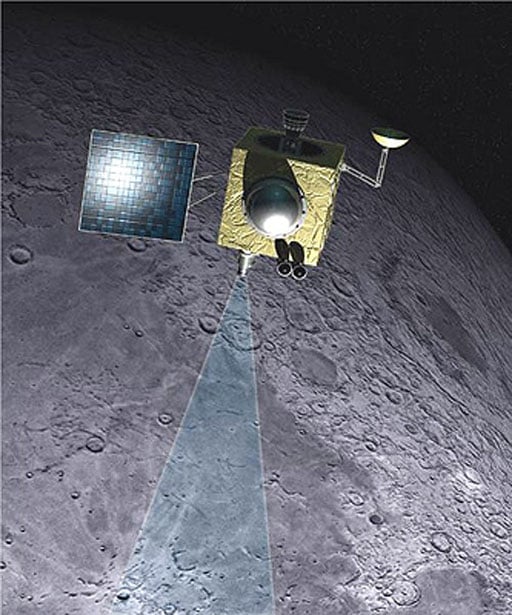[/caption] Chandrayaan-1, India's first unmanned spacecraft mission to moon, successfully entered lunar orbit on November 8. The spacecraft fired its engines to reduce velocity and enable the Moon's gravity to capture it; engines were fired for 817 seconds when Chandrayaan-1 was about 500 km away from the moon. Next up for the spacecraft will be to reduce the height of its lunar orbit to about 100 km. Then, on Nov. 14th or 15th, the Moon Impact Probe (MIP) will be launched, and crash into the Moon's surface (more about the MIP below). If you enjoy watching animations and want to see exactly how the spacecraft attained its lunar orbit, here's a few animations for you:
A simple animation of how the spacecraft went from its spiraling elliptical orbit around Earth to its now spiraling elliptical orbit around the moon can be found on the India Space Agency's site. (Sorry, the file was to big to insert here.)
Another
quite large animation that was created by Doug Ellison
(of UnmannedSpaceflight.com) shows how the X-ray Spectrometer aboard Chandrayaan-1 will work. This one takes a long time to download, but the wait is well worth it: the animation is spectacular.
Here's a
video that shows an animation of the entire mission
; again, some great animation here. Enjoy.
The spacecraft is now orbiting the moon in an elliptical orbit that passes over the polar regions of the moon. The nearest point of this orbit (perigee) lies at a distance of about 504 km from the moon's surface while the farthest point (apogee) lies at about 7502 km. Currently, Chandrayaan-1 takes about 11 hours to orbit the moon.
The MIP carries three instruments:
Radar Altimeter – measures the altitude of the probe during descent and for qualifying technologies for future landing missions.
Video Imaging System – acquires close range images of the surface of the Moon during descent. The video imaging system consists of analog CCD camera.
Mass Spectrometer measures the constituents of lunar atmosphere during descent.
Source: ISRO
 Universe Today
Universe Today
